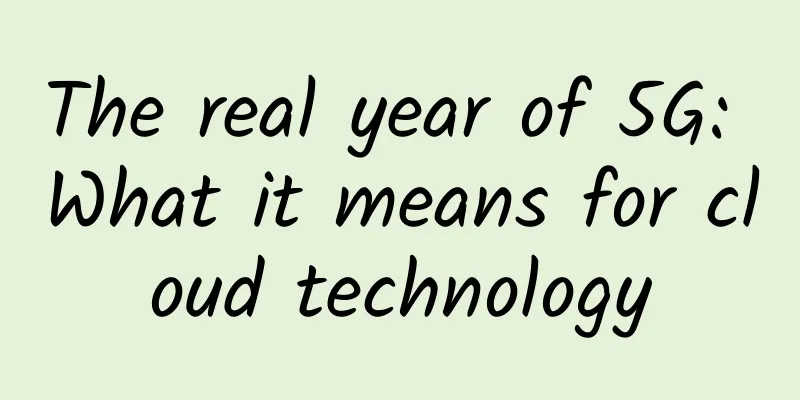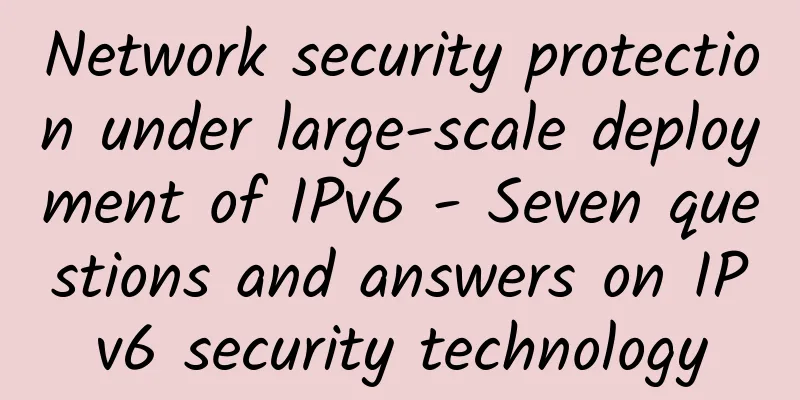The real year of 5G: What it means for cloud technology

|
We are now in the third year of “The Year of 5G.” But seriously, this should be the year of 5G! Years of marketing hype have led to many false starts for this exciting new mobile technology. But as budgets are freed up in 2021, we are ready to see the final explosion of next-generation low-latency mobile technology infrastructure, enabling a host of new services and applications, from real-time business analytics to connected tractor trailers. Several developments in the past few months, including spending of more than $100 billion by major North American operators on C-band auctioned spectrum and increased capital expenditure budgets by companies like Verizon and T-Mobile, indicate that they are investing real money. For example, Verizon said it expects to spend $10 billion (per year) over the next three years above its normal capital expenditures. Verizon plans to add 5G in 46 markets over the next 12 months, serving 100 million users. Major North American airlines have already pointed the way toward increased spending in 2021. FUTURIOM.COM What's more, the economic environment is favorable for 5G in the shadow of the COVID-19 pandemic crisis. The global economy is recovering and governments are rolling out stimulus measures. Interest rates are likely to remain low for some time, which is favorable for investment. Last year's crisis also triggered a wave of technology reviews as major industries adapted to shutdowns and remote work. All of this suggests that investment in digital transformation technologies is accelerating, and 5G will play a key role in it. What to expect? Top-level services from 5G5G deployment is expected to accelerate through 2021, as evidenced by the hundreds of billions of dollars recently pledged toward 5G infrastructure and services. As 5G infrastructure is deployed and cloud computing resources extend to the edge of the network, cloud infrastructure is increasingly converging and integrating with communications networks, a trend that is likely to continue as 5G deployments expand. 5G means more data - the fuel for cloud applications around the world. Cloud providers and service providers alike are looking to expand infrastructure and services to capture, transmit and process this data. From 2021 to 2025, the most promising applications and use cases of 5G edge cloud will appear in the edge cloud, including wireless broadband, streaming media, cloud gaming, connected vehicles, smartanything (smartX), immersive experience (VR/AR), multi-access edge computing (MEC) as a service, and private wireless networks. There are many promising 5G applications and services in vertical industries. What do all these applications have in common? 5G’s greater bandwidth and lower latency make possible the huge demand for data and connectivity. The arrival of 5G will be a catalyst for accelerating cloud architecture based on technologies such as virtualization and microservices. This will benefit suppliers of software virtualization technology and cloud technology, as well as technology suppliers focusing on service automation, security and cloud-native architecture. The cloud ecosystem will continue to expand as public cloud providers look to extend their cloud footprint to the edge and work with communications service providers (CSPs) and data center providers to build edge infrastructure. Collaboration between cloud providers, CSPs, and data center providers is beginning to accelerate. Building the cloud edge5G has generated a lot of interest in the investment community -- all you have to do is Google "top 5G stocks" to be bombarded with investment ideas in the media. Why is everyone excited about 5G? Built on a flexible, digital, and virtualized architecture, 5G infrastructure has many new features that enable the launch of a wide range of new services and technical capabilities. Some of the more important features include:
5G players worth watchingFuturiom’s recent 5G Catalyst Report takes a pragmatic look at who will benefit from this massive infrastructure investment. We find that the benefits are likely to be widespread. Verticals such as retail, manufacturing, and healthcare will see improved customer experiences by connecting customers through 5G connectivity. Factories will continue their long-awaited migration toward digitalization and automation, a trend known as Industry 4.0. This will increase productivity and profitability across many different industries. In terms of networks and technologies, the growth of all infrastructure will stimulate the development of the edge infrastructure ecosystem as CSPs and cloud providers collaborate to bring the cloud and communication networks closer to customers. This includes upgrading mobile base stations, central offices and cloud access points (POPs) to provide advanced 5G infrastructure and expanding virtualized infrastructure to support new services and applications. Technology sectors that will benefit from 5G deployment include public cloud providers, content delivery networks (CDNs), cloud networking technologies, micro data centers, internet switches, data center hosting providers, smart network interface cards (NICs), edge orchestration, security providers, fiber front-end channels, fiber backhaul, automation software, edge computing devices, and edge data management software. Of course, semiconductors are the cornerstone of all these devices and services - 5G connectivity chips are likely to thrive. For global CSPs, the impact is less clear. The size and debt load of the major global service providers make it difficult for them to move fast or grow revenue quickly. They will need to be more creative to capture a larger share of the 5G value chain. Some companies I follow:Key 5G Edge Leaders to Watch (Public Companies): Akamai (NASDAQ:AKAM), Amazon (NASDAQ:AMZN), AMD (NASDAQ:AMD), AT&T (NYSE:T), Ciena (NYSE:CIEN), Cloudflare (NYSE:NET), Dell (NYSE:Dell), Digital Realty (NYSE:DLR), Equinix (NASDAQ:EQIX), Ericsson (NASDAQ:ERIC), Fastly (NYSE :FSLY), Google (NASDAQ:GOOGL), HPE (NYSE:HPE), IBM (NYSE:IBM), Intel (NYSE:INTC), Microsoft (NASDAQ:MSFT), Nokia (N YSE:NOK), NVIDIA (NASDAQ:NVDA), Qualcomm (NASDAQ:QCOM), T-Mobile (NASDAQ:TMUS), Verizon (NYSE:VZ) and VMware (NYSE:VMW). Key 5G Edge Leaders to Watch (Private Companies): Many interesting cloud startups have their own take on 5G, and some of the more interesting ones are focused on providing cloud networking and infrastructure software for edge enterprises. These include Alkira, Arrcus, Aryaka, DriveNets, EDJX, Infiot, Itential, Kentik, Saguna Networks, StackPath, Triggermesh, Steam.io, Versa Networks, Volta Networks, and Weaveworks. After years of hype, 5G edge cloud infrastructure is finally seeing real-world use in large-scale deployments. This could have a huge impact on enterprises, service providers (cloud and CSPs), and municipal organizations. 5G technology is maturing, partnerships and investments by cloud providers and CSPs are accelerating, and 5G connectivity is expanding. These factors, coupled with a recovering global economy and low interest rates, are setting the stage for a boom in the development of new 5G applications and services. |
<<: Internet speed is getting slower and slower? The router is the key!
>>: Detailed explanation: How did China Mobile perform in 2020?
Recommend
VXLAN technology introduction: Building a virtual Layer 2 network with a Layer 3 network
1. VXLAN Overview 1. What is VXLAN VXLAN (Virtual...
5G core network revenue expected to reach $1 billion by 2020
5G core network revenue will reach $1 billion in ...
Http protocol: Under what circumstances does an options request occur?
background: A new colleague asked me that there w...
The cancellation of data roaming charges has become inevitable, but do operators still have to wait until they get punished?
There is a theme every year. Once one is solved, ...
The three major operators secretly cut 5G prices. Users: The private 9-yuan package is still more attractive
According to customer service, the 5G network tra...
Building a cloud foundation to connect the world | Ruijie Networks presents cutting-edge products at the 2021 PT Expo
On September 27, 2021, the 30th China Internation...
Mainstream IoT wireless technologies are here!
This article covers: Bluetooth, WiFi, BLE, Zigbee...
What is the impact of major players withdrawing from the LoRaWAN network on China?
According to foreign media enterpriseiotinsights,...
China Unicom expects the number of 5G base stations to reach 700,000 by the end of this year
China Unicom recently released its financial resu...
On-Prem vs. Colocation vs. Cloud vs. Edge: Pros and Cons
In today's digital economy, technology has be...
Simple test of HostYun Australian data center AMD series VPS
Earlier this month, the blog shared information a...
How to Choose the Right Switch for Your Network?
When it comes to networking, switches are crucial...
Illustrated TCP three-way handshake: building a network session step by step
In Internet communications, ensuring the reliabil...
Maxthon Host: Germany CU2 low latency large bandwidth 20% off, 2GB memory package monthly payment 60 yuan
Maxthon Hosting has been very low-key for a long ...
South Korea's 5G users will reach tens of millions! It is important to drain the "water"
As the core of the new generation of communicatio...









